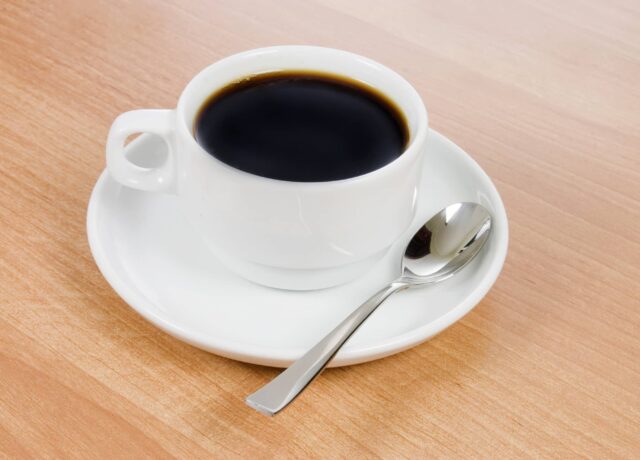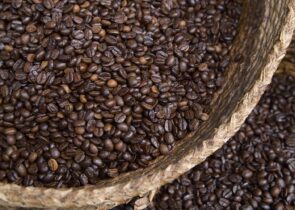If you’re beginning to roast and grind your coffee beans, you might be wondering how to customize the flavor of your cup of coffee. It’s not just what you put in the coffee once it’s brewed–you can affect the taste of your coffee even before grinding it.
By mixing coffee beans before roasting them, you can affect the flavor profile of the roast and the blend. There are dozens of varieties of coffee beans from various world regions, and the coffee bean blending options are endless. Some coffee blenders choose specific beans for house or barista blends.
Mixing Coffee Beans
Mixing coffee beans or grounds is not a new practice. Most brands of coffee use bean blends to increase flavor. Single-origin coffee grounds are more expensive to make and taste purer. However, bean blends have fuller flavors and can come in many varieties and combinations.
Coffee beans from the same area generally taste the same because they’re grown in the same soil and environment. However, when you mix different beans, you can combine their flavors. Coffee blending is considered an art form by many coffee drinkers and can be customized to the blend of tastes you like the best.
Coffee Blending
The two most common types of beans in the coffee industry are robusta and arabica beans. Robusta coffee beans are easy to grow and less expensive, which means supermarket blends will have mostly robusta beans. They have a strong, full, nutty flavor and are famous for this and their price point.
Some coffee drinkers primarily consume arabica coffee beans because of their taste. However, other consumers complain about the bland or sour taste of arabica coffee beans. To please the most coffee drinkers and save money on production, most companies mix the two kinds of beans.
There are two other kinds of coffee beans: liberica beans and excelsa beans. However, neither of these beans is commonly used, and they are quite hard to come by. The main difference between coffee beans is where they are grown, not necessarily the kind of bean they are.
While there are only four main kinds of beans, there are hundreds of different varieties of these beans. Depending on where the coffee was grown, the taste becomes diverse and more localized. Coffee from Kenya tastes different from Brazilian or Colombian coffee. The various coffee blends make for a wide variety of combinations.
Coffee beans also come in different roast levels, which affect the taste and aroma of the coffee blend. If you’re going to roast your beans, you have control over how dark the roast is. However, pre-roasted coffee beans come in either light, medium, or dark roasts.
The darkness of the roast affects the strength of the coffee. The roasting process causes a chemical reaction within the bean itself, bringing out specific flavors and aromas. The darker the roast, the more robust the coffee.
There are many different blends on the market: common names include “barista blend” and “coffee shop blend.” However, these are usually 80% robusta coffee beans and 20% arabica beans. While this is a decent blend for taste and fullness, more elite coffee drinkers might not enjoy the heavy focus on robusta beans.
Blends of Coffee Beans

Coffee blends depend on several factors: the type of coffee beans, the location they were grown, and the darkness of the roast. There are unlimited options for coffee blends with these combinations. If you like a specific type of coffee bean, you can blend it to your specifications.
Best Blends
Although there are unlimited options for blending coffee beans, there are several popular blends. Baristas and coffee drinkers might make their own blends, but many coffee drinkers enjoy these coffee mixes. The most common combinations have been widely tested and remain popular choices for mainstream coffee drinkers.
Black and Tan
The “black and tan” coffee combination mixes a light roast and dark roast coffee to create a medium blend of coffee. Coffee roasters mix dark and light beans to increase the variety and fullness of the taste. Generally, black and tan coffee blends are made from Colombian light and dark roast coffees.
Mocha Java
One of the most common coffee blends, Mocha Java, consists of one-third mocha coffee beans (generally from Yemen) and two-thirds mandheling blend from Sumatra. It combines the chocolate notes of mocha with the high caffeine content of java for a classic combination.
Other
There are dozens of other combinations of coffee beans. The most commonly found in stores has a blend ratio of 80% robusta coffee beans and 20% arabica beans, but local coffee stores often offer their unique combinations. You can ask what blend of coffee your favorite barista uses, especially if they’re a specialty roasting company.
How to Blend Coffee Beans

To blend coffee beans, you first have to decide what kind of beans you’re going to use and the quality of the roast. You’ll have to do your research and determine what type of beans you like for your personal coffee blend. You can ask what the blend of your favorite coffee at the coffee shop is or examine the store-bought brands you would like more.
If you decide to buy pre-roasted beans, you can determine what depth of roast you like. However, roasting your beans isn’t hard and is a great way to control your roast’s exact amount of darkness. Once your beans are chosen and roasted, you can mix them before grinding and brewing your coffee.
To blend the beans, you need to mix them in the correct ratio before grinding them. You can experiment with mixes to find your favorite flavor. Try beans from Kenya, Colombia, Nicaragua, Costa Rica, or any other coffee-growing country, and mix them in different amounts. Blending a great coffee is a matter of experimentation and personal taste.
Final Thoughts
Although there are many different ways to blend custom coffee beans, the best way is to experiment with beans for yourself. You can experiment with lighter roast and dark roast, combinations of bean growing locations, and types of coffee beans to decide the kind of coffee mixes that are your favorites.
Happy Caffeinating!







